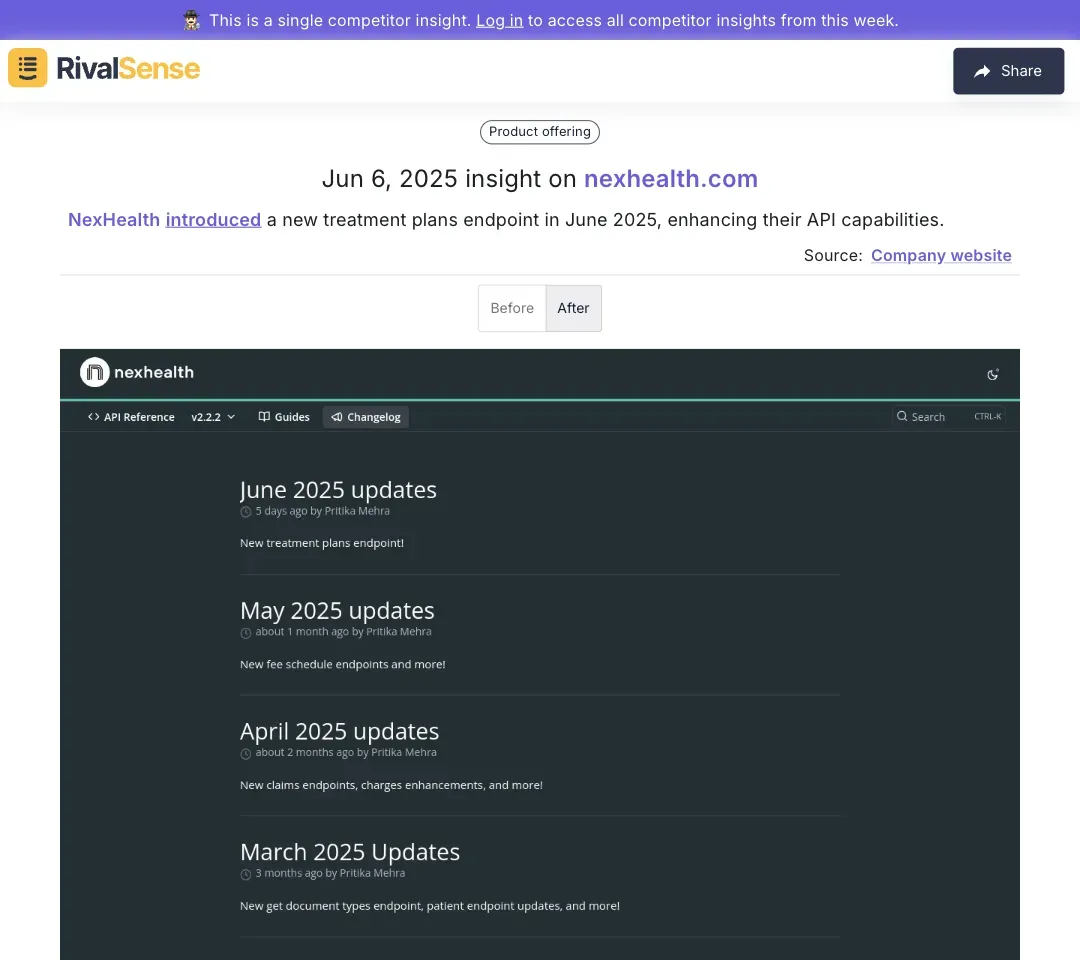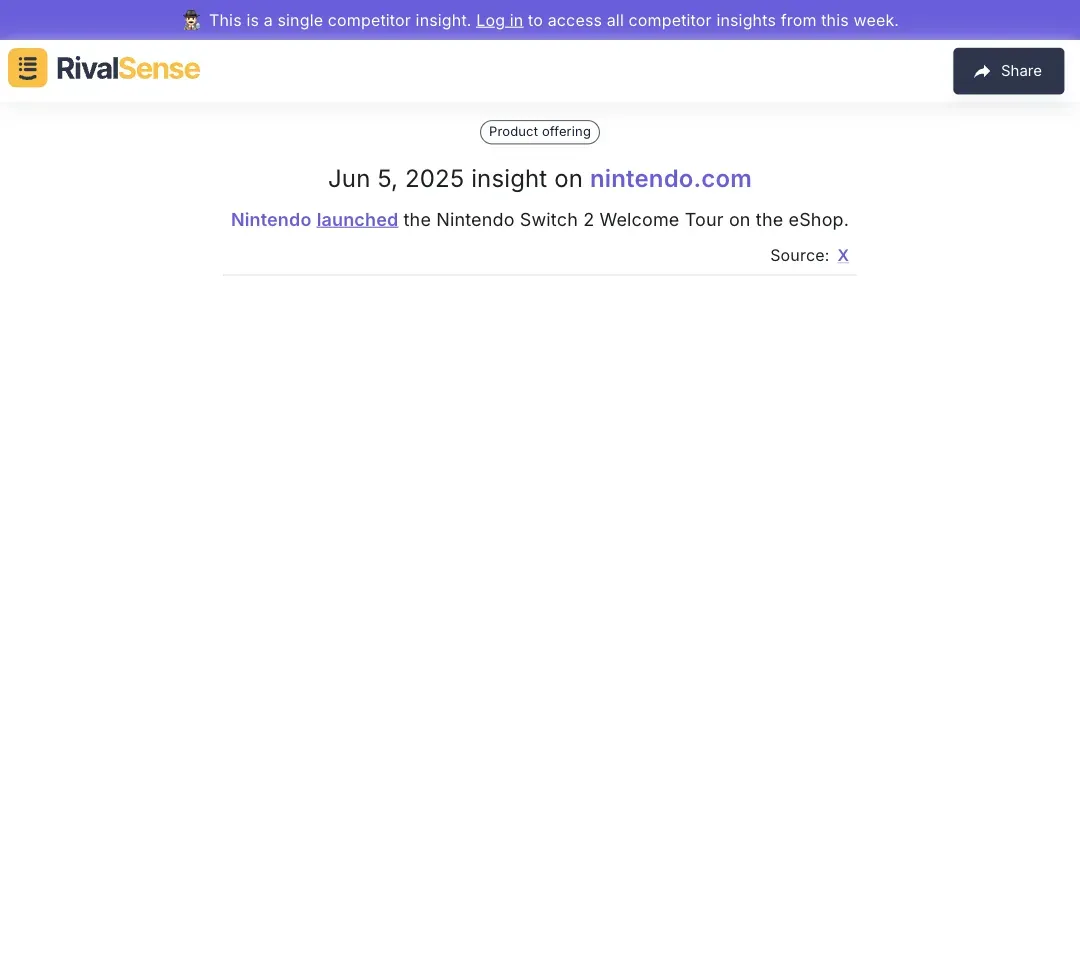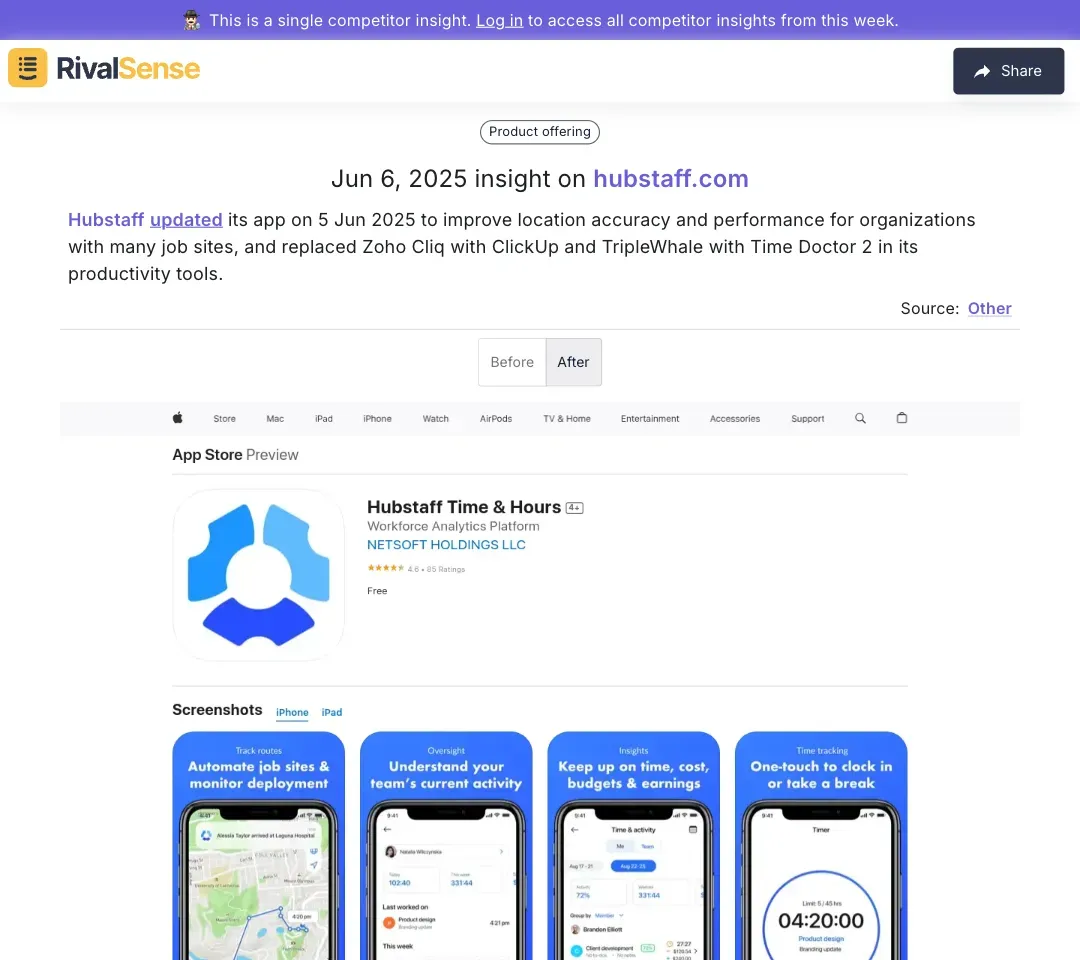Beginner’s Guide to Analyzing Competitor Product Offerings
Understanding the importance of analyzing competitor product offerings is the first step in gaining a competitive edge. By examining what your rivals are offering, you can identify gaps in your own product lineup, spot emerging trends, and anticipate market shifts. This analysis isn't just about keeping up—it's about staying ahead. For example, if a competitor launches a feature that resonates with customers, you can adapt or innovate to meet similar needs.
Competitor insights can significantly inform your product strategy. By tracking their updates, you can benchmark your offerings, refine your value proposition, and prioritize development efforts. Practical steps include creating a competitor matrix to compare features, pricing, and customer feedback.
✅ Competitor Tracking Checklist:
- Identify top competitors
- List their key products
- Document recent launches/updates
- Compare pricing structures
- Analyze customer review patterns
To stay informed, monitor various types of competitor updates such as new product releases, feature enhancements, pricing changes, and customer reviews. Tools like RivalSense can automate this tracking, saving you time and ensuring you don't miss critical updates. Set up alerts for competitor announcements and regularly review their websites and social media channels to maintain a proactive stance.
Monitoring Product Updates and Enhancements
Keeping an eye on your competitors' product updates provides actionable intelligence for refining your own roadmap. These enhancements often reveal market priorities and customer pain points you might have overlooked. For instance, tracking performance improvements can indicate where users experience friction.
Here's how to effectively leverage these changes:
-
Identify Key Updates: Monitor competitors' release notes and blogs for feature announcements. Automated tools can flag changes like UI revamps or functionality expansions.
-
Decode Customer Impact: Analyze how updates address user needs. Ask:
- What problem does this solve?
- How does it compare to our solution?
- Should we prioritize something similar?
-
Benchmark Your Progress: Compare update frequency and magnitude against your own development cycle. Competitors consistently rolling out improvements may indicate stronger R&D resources.
📌 Practical Tips:
- Subscribe to competitor product newsletters
- Set up Google Alerts for "[Competitor] + update/release"
- Quarterly review their full changelog history
Analyzing Competitor API and Integration Changes
API updates signal where competitors are investing in ecosystem growth and technical capabilities. These changes often precede market shifts toward new integration patterns or partnership models. Monitoring them helps you anticipate industry standards and avoid compatibility gaps.
For example, consider this recent insight captured by RivalSense:

NexHealth introduced a new treatment plans endpoint in June 2025, enhancing their API capabilities.
This type of insight is valuable because API expansions reveal focus areas for developer resources and potential partnership opportunities. When competitors strengthen integrations, it often indicates rising customer demand for workflow connectivity.
🔧 Implementation Framework:
- Track competitor API documentation changes
- Assess adoption difficulty (e.g., authentication complexity)
- Reverse-engineer sample requests
- Identify complementary integration opportunities
- Prioritize based on your users' tech stack
✅ Action Items:
- Join competitors' developer communities
- Test their API endpoints quarterly
- Document versioning patterns
Evaluating Competitor Marketing and Promotional Strategies
Marketing campaigns reveal how competitors position products and target audiences. Analyzing promotional tactics helps you identify messaging trends and untapped channels. Major campaigns often indicate new market entries or repositioning efforts.
Consider this RivalSense insight:

Nintendo launched the Nintendo Switch 2 Welcome Tour on the eShop.
This type of insight is valuable because event-based promotions signal audience expansion strategies and product lifecycle stages. Campaign timing often correlates with seasonal demand patterns you can leverage.
📊 Analysis Methodology:
- Map campaign elements:
Component What to Track Channels Social, email, paid ads Messaging Value propositions, CTAs Duration Launch timing, frequency - Measure engagement metrics (shares/comments)
- Reverse-engineer conversion paths
💡 Pro Tip: Create swipe files of competitor landing pages during campaigns to study their positioning hierarchy.
Assessing Competitor Tool and Platform Switches
When competitors change operational tools, it reveals pain points and efficiency priorities in your industry. These shifts often indicate emerging best practices or scalability challenges worth evaluating for your own stack.
For instance, RivalSense detected this comprehensive change:

Hubstaff updated its app on 5 Jun 2025 to improve location accuracy for organizations with many job sites, and replaced Zoho Cliq with ClickUp and TripleWhale with Time Doctor 2 in its productivity tools.
This insight is valuable because tool migrations expose workflow friction points and cost/performance tradeoffs. When multiple competitors adopt similar platforms, it may indicate industry-wide standardization.
🛠️ Evaluation Framework:
- Identify switched tools (via job posts/community forums)
- Research why:
- Feature gaps?
- Pricing changes?
- Integration needs?
- Test alternatives in sandbox environments
- Calculate potential ROI for similar changes
✅ Checklist for Tool Analysis:
- Inventory competitors' tech stack quarterly
- Note vendor consistency across departments
- Track implementation timelines
Conclusion and Next Steps
Regular competitor product analysis transforms market awareness into strategic advantage. By systematically tracking offerings, you gain insights to refine positioning, accelerate development, and capitalize on gaps. The key is consistent monitoring rather than one-time assessments.
To operationalize these insights:
- Prioritize Findings: Focus on changes impacting your revenue segments
- Benchmark Quarterly: Compare feature parity using scoring matrices
- Innovate Proactively: Turn competitor weaknesses into your opportunities
- Automate Tracking: Use tools to reduce manual monitoring overhead
🔁 Maintenance Routine:
- Monthly: Scan for major updates
- Quarterly: Full competitive audit
- Annually: Re-evaluate competitor list
📋 Implementation Checklist:
- [ ] Schedule recurring analysis sessions
- [ ] Create shared competitor dashboards
- [ ] Assign team ownership for each competitor
- [ ] Document insights in strategy meetings
Streamline your analysis: Try RivalSense for free to automatically track competitor product launches, pricing changes, and tech stack evolutions. Get your first competitor report today and never miss a strategic move.
📚 Read more
👉 Decoding Competitor Strategy Shifts: A TrustArc Case Study
👉 Socure's New AI Tools for Gaming Compliance: What It Means for Competitors
👉 Turning Event Sponsorships into Actionable Competitive Intelligence
👉 Mastering Competitor API Strategy Analysis: A Guide for Business Leaders
👉 Baby Goods Competitive Audit: A Step-by-Step Cheat Sheet for Retailers
